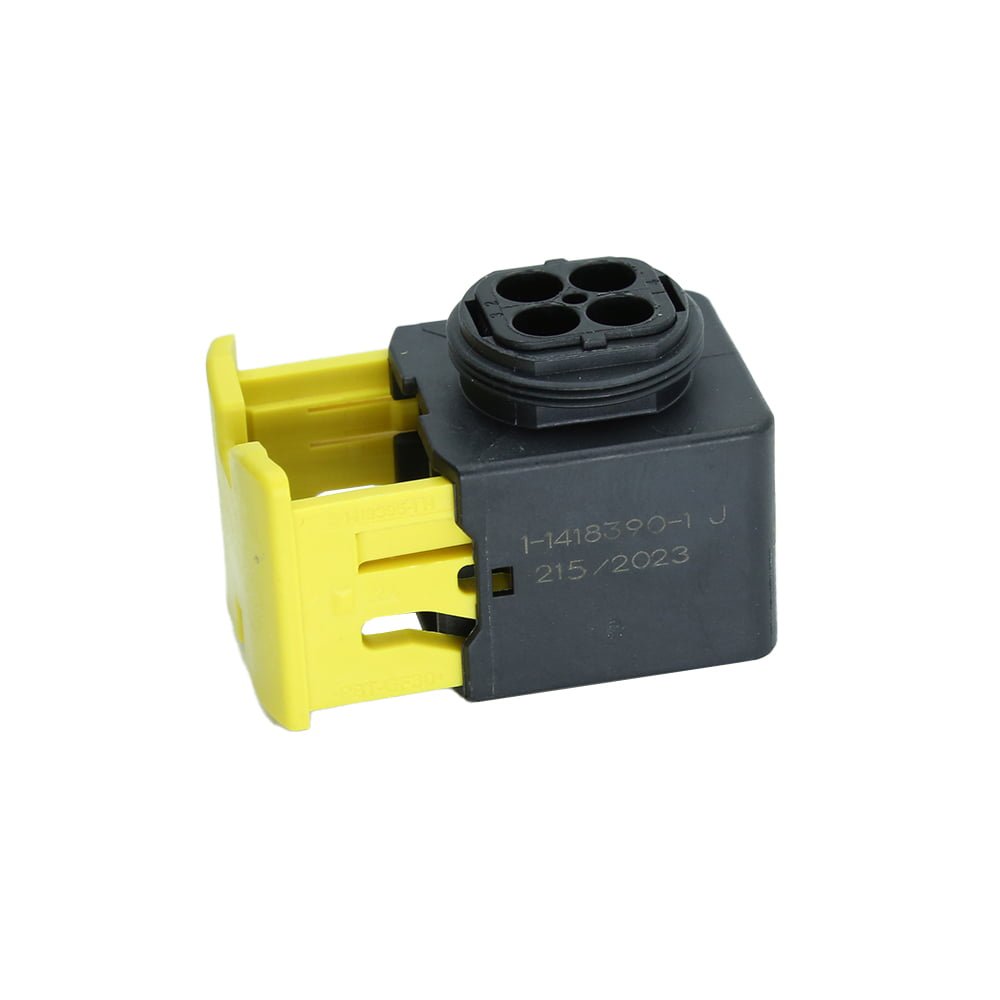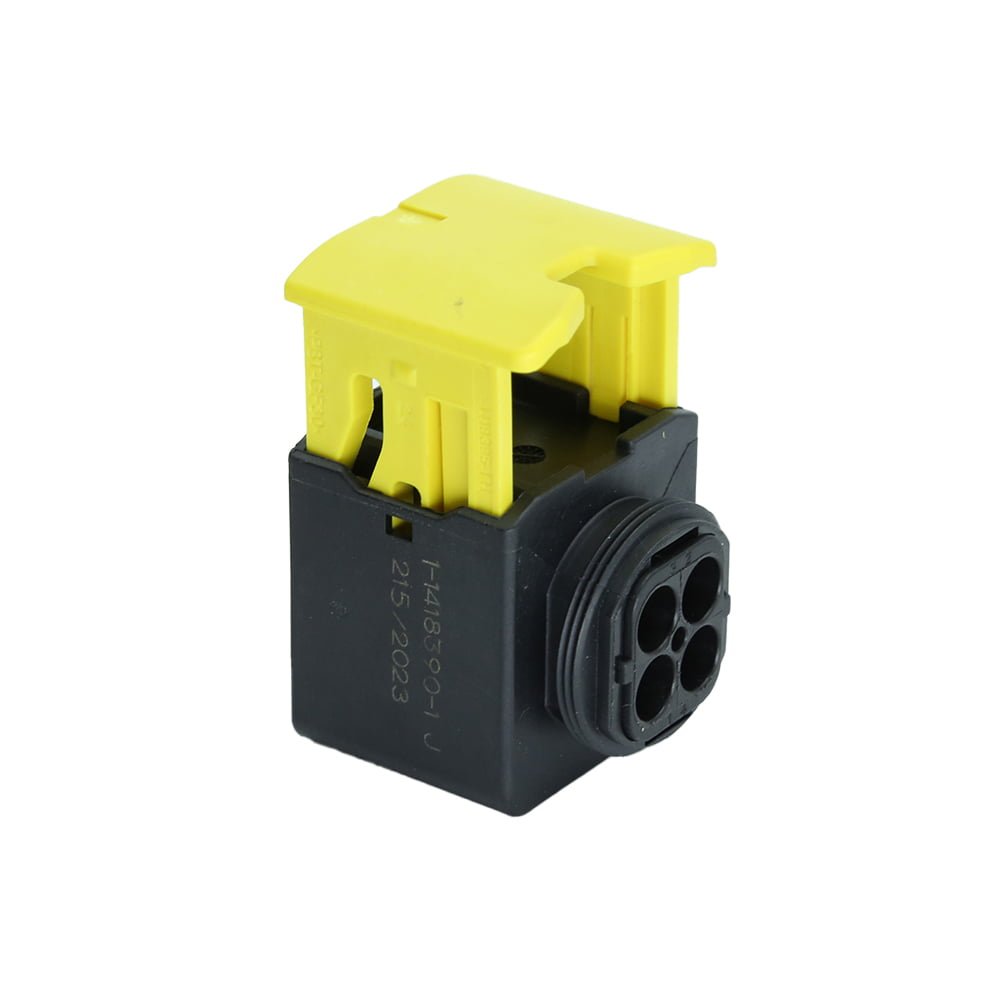Purpose and Features of 4 Pins Automotive Connectors
4 pins automotive connectors are essential components in modern vehicles, ensuring the seamless transmission of power and signals across various electrical systems. These connectors are particularly useful in simpler circuits, such as those for lights, sensors, and small motors. Their design allows for stable, reliable connections in environments where consistent electrical performance is crucial.
Key Features:
- High Current Carrying Capacity:
Many 4 pins automotive connectors are built to handle substantial electrical loads, making them indispensable in systems requiring high power transmission, such as engine control units or lighting systems. For instance, a typical 4-pin connector can manage the electrical demands of both headlights and taillights in a vehicle without compromising performance. - Waterproof Design:
Some 4 pins automotive connectors come with waterproof features, allowing them to function effectively in wet or outdoor environments. This is particularly important for components exposed to the elements, such as exterior lighting or undercarriage sensors. The waterproofing ensures that moisture doesn’t cause short circuits or corrosion, preserving the integrity of the connection. - Durability:
These connectors are typically made from high-quality materials that can withstand harsh conditions like extreme temperatures and vibrations. This durability makes them ideal for use in areas like the engine bay, where components are subject to constant movement and temperature fluctuations.
What Are the Standardization Requirements for 4 Pins Automotive Connectors?
To ensure global consistency and reliability, 4 pins automotive connectors must meet stringent standardization requirements. In Europe, LV214 is a common standard, while USCAR2 is widely used in North America. These standards define the performance criteria for temperature resistance, vibration endurance, and sealing capacity—ensuring that connectors can maintain optimal functionality across various environments.
As modern vehicles become more reliant on electronic control units and sensors, the demand for more sophisticated automotive electrical connector types has risen. Manufacturers have responded by developing miniaturized, high-density connectors capable of handling complex electrical systems without sacrificing reliability.
For example, TE Connectivity’s NanoMQS system offers a reduced footprint while still delivering high current capacity and vibration resistance—meeting the needs of today’s densely packed vehicle electronics.
Various Automotive Electrical Connector Types: Characteristics and Advantages
Automotive connectors come in numerous shapes and sizes, each serving a specific function within a vehicle’s electrical system. Here’s a breakdown of some common automotive electrical connector types:
- Pin Connectors:
Pin connectors are widely used in engine management systems and lighting circuits due to their ability to handle high currents reliably. They provide secure connections through metal pins that fit into corresponding female sockets. - Blade Connectors:
Also known as spade connectors, these are commonly used for relays and switches because they allow for easy disconnection when needed. Their flat design ensures a snug fit into terminals. - High-Density Connectors:
These connectors allow manufacturers to pack more pins into a smaller space, which is essential for modern vehicles with multiple electronic systems like infotainment or advanced driver-assistance systems. High-density connectors not only save space but also reduce weight—critical factors when designing efficient automotive systems.
Choosing the right type of automotive connector kit can significantly enhance signal integrity while offering future-proofing options for expanding vehicle functionalities.
Why Waterproof Ratings Matter for 4 Pins Automotive Connectors
Waterproof ratings are crucial for ensuring that 4 pins automotive connectors can perform reliably in harsh or wet environments. Many automotive components are exposed to rain, snow, mud, or even saltwater—especially those located on the exterior of the vehicle or near the undercarriage. Without proper waterproofing (such as an IP67 rating), moisture could seep into the connector housing, leading to corrosion or electrical shorts.For example, headlights or taillights often rely on waterproof connectors to maintain their functionality during adverse weather conditions. A connector with an IP67 rating is dust-tight and can withstand immersion in water up to one meter deep for 30 minutes—ensuring it remains operational even when submerged temporarily.
How to Evaluate the Impact Resistance of Automotive Connectors
Impact resistance is a critical factor when choosing automotive electrical connector because vehicles experience constant vibrations and shocks during operation. A good example is TE Connectivity’s NanoMQS system, which is designed to withstand up to 400g sinusoidal vibrations—making it suitable for installation near engines or other high-vibration areas.When evaluating impact resistance, consider both the material composition and design features of the connector. High-quality materials like gold- or silver-plated contacts offer lower resistance and better durability under stress. Additionally, secondary locking mechanisms can help ensure that the connector remains securely fastened even under extreme conditions.



